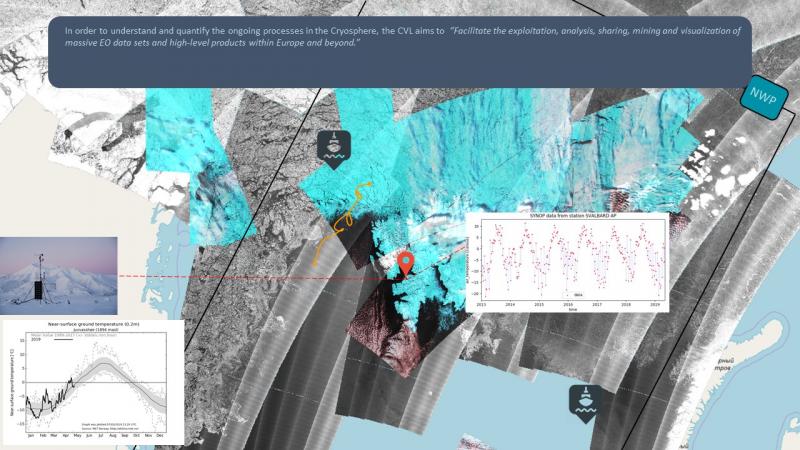Cryosphere Virtual Lab is a project funded by the European Space Agency and will build up a system that will use recent information and communication technologies to facilitate the exploitation analysis, sharing, mining and visualization of the massive amounts of earth observation data available. The system will utilize available satellite, in-situ and model data from ESA/EU, Svalbard Observatory (SIOS) and other sources. CVL will foster collaboration between cryosphere scientists and allow to reduce the time and effort spent searching for data, and to develop their own tools for processing and analysis.

Figure 1. Example using data mining to combine satellite and in situ data
The CVL system will use modern digital architecture to develop a system available for users to easily develop advanced cryosphere processing systems that utilizes cloud computing services and massive data storages spread out worldwide. By doing this the users may access data and produce results quickly. We will demonstrate the feasibility of the system in 5 use cases on a wide field of applications including snow, sea ice and glaciers, but also fund 20 PhD/Master students that shall explore the system for their own applications.
The system will be built upon open scientific standards, and data as well as code will be published openly to allow users to adapt the system to their interests. The system will also provide tools for visualization in 2D and 3D.
The UN IPCC has in their latest report (September 2019) provided new and compelling evidence for the increasing man-made climate changes that goes on in the Arctic region (SROCC, Special report on ocean and cryosphere,). The report points to many disturbing facts related to the destruction of the cryosphere including reduction of glaciers, sea ice and annual snow cover. CVL will contribute to upcoming IPCC reports with new and more detailed knowledge about the ongoing changes.
CVL will continue to live after the 3 year project has been finalized, and aims at providing free-of-charge services for the users that are interested in delivering new information about the rapid changing Arctic Cryosphere.
Figure 2. Processing flows in the CVL system.





